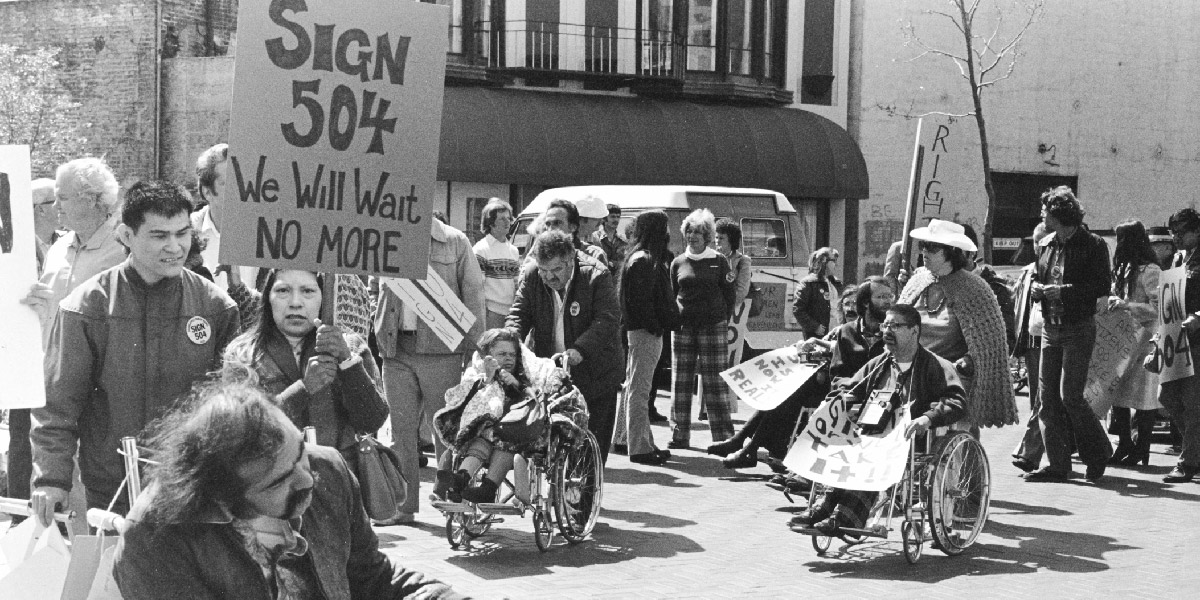Patient No More: People with Disabilities Securing Civil Rights

At the monthlong protest in 1977, some came on crutches or with canes, others in wheelchairs, some communicated using American Sign Language, others used augmented communication devices, still others said everything simply by showing up and saying nothing at all. Section 504 of the 1973 Rehabilitation Act was to grant equal civil rights to people with disabilities but the regulations awaited a final signature, and officials had gotten cold feet. Protesters occupied buildings across the country, and thanks to help from an improbable coalition — from Safeway to the Black Panthers, the gay men’s Butterfly Brigade to labor unions — those in San Francisco stayed far longer. The 504 regulations would serve as the basis of the Americans with Disabilities Act 13 years later, and the occupation that led to the approval would be a watershed personal and political moment, one that solidified the Bay Area’s key role in the struggle for disability rights.
Multiple forms of accessibility are built into all aspects of the Patient No More exhibition to showcase the benefits of approaching information in a variety of creative ways. It generates content to help K-12 teachers fulfill California’s 2011 FAIR Education Act that mandates introducing disability history, and at the same time will generate thoughtful questions for everyone. How did it come to pass that over one hundred people with disabilities — many who didn’t know each other and had never been political before — engaged in the longest occupation of a federal building in U.S. history? And who did this victory actually benefit within and beyond people with disabilities?
Individual stations have built-in accessibility features so that people various cognitive disabilities, vision, hearing and mobility impairments can visit.
Links
Photo by Anthony Tusler